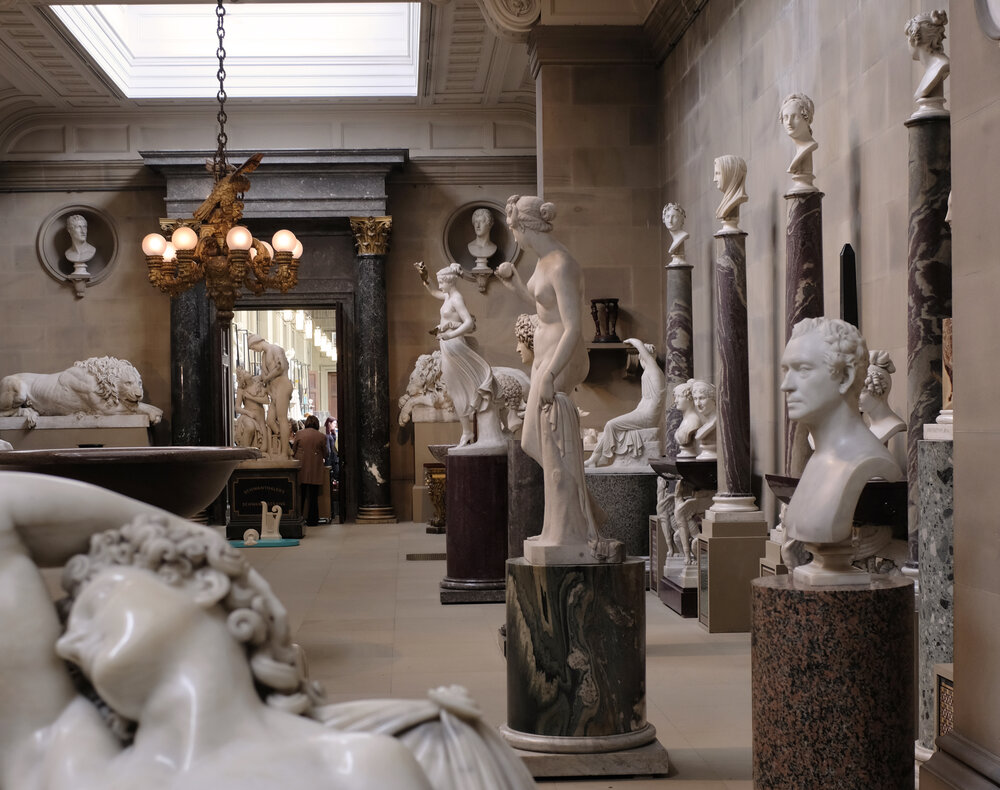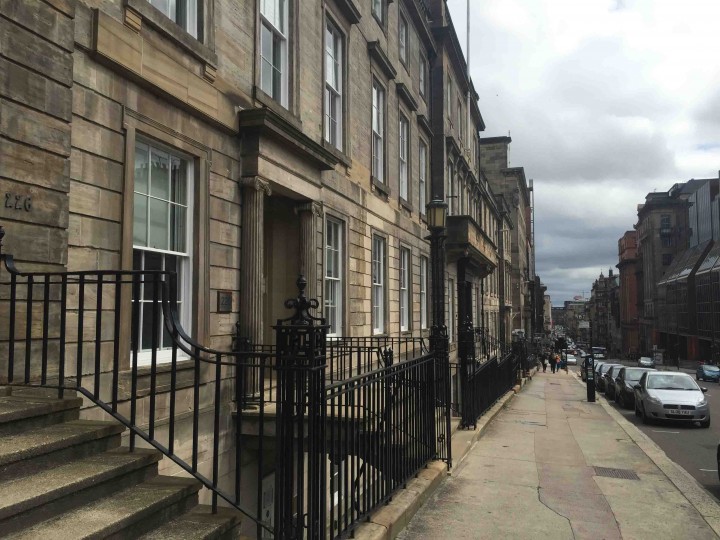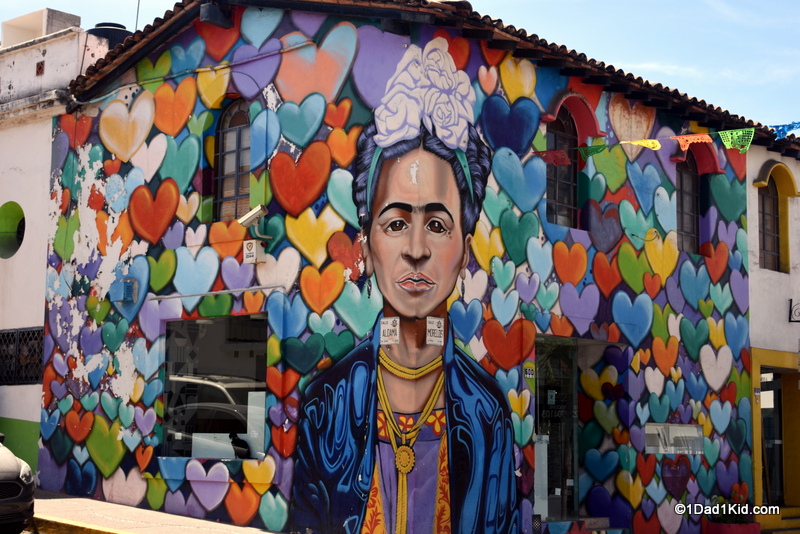Situated in the majestic Peak District, Chatsworth House stands as one of England’s most iconic and grandest stately homes.
With its rich history, opulent architecture, expansive gardens, and a collection of art that rivals world-famous museums, Chatsworth House is recognised as a major attraction in the North of England.
Despite growing up in the North, I never managed myself to step foot inside Chatsworth. However, during a recent trip to visit my parents in Yorkshire, I did exactly that. Along with my mother and twin brother, we headed over the beautiful South Pennines and ventured into the famed countryside landscape.
The approach to Chatsworth, set against the picturesque backdrop of the River Derwent and the rolling Derbyshire hills, is an attraction in itself. So much so that you might be tempted to jump out and go hiking instead.
If you feel such an urge (which is very likely), I recommend leaving enough time to enjoy both activities. Keep reading, and I’ll tell you where to go afterwards for the best short walks and vistas.

The Dramatic History of Chatsworth House in a Nutshell
Chatsworth House has been the ancestral home of the Cavendish family, the Dukes of Devonshire, for over 16 generations since the days of King Henry VIII.
The house was originally built in the 1550s by Sir William Cavendish and his wife, Bess of Hardwick, one of the most powerful and influential women of the Tudor era. Why was she so powerful? She had a knack for marrying wealthy men!
Even after the passing of William Cavendish she managed to secure marriages to men each more affluent than the last. Don’t judge her too much. This was at a time when women had little opportunity to work for themselves so ‘marrying well’ was seen as their only way to financial security. Anyway, this ensured the estate’s development and Bess played a significant role in establishing the grandeur of Chatsworth.

Ascent to Dukedom
In the late 17th century, the 1st Duke of Devonshire, William Cavendish, commissioned a major rebuilding of Chatsworth in the style of English Baroque architecture. This included the 900-ft long canal pond that gives the illusion that the palatial estate is floating on water.
Note: Just to make it confusing for you, up until the 20th Century all the first-born boys were called William in the Cavendish family.
The 1st Duke was a key figure in the Glorious Revolution, which helped promote the family title from an earl to duke. (Essentially, a duke is the highest ranking aristocrat in the UK behind monarchs.) He saw the ascent of William and Mary to the English throne, and his influence is reflected in the grand and politically symbolic architecture of the house.
Throughout the 18th and 19th centuries, Chatsworth continued to evolve. The 5th Duke of Devonshire married Georgiana Spencer, one of the most famous socialites of her time. A woman who enjoyed the finer things in life, she further enhanced the house and its gardens.
The reign of Georgiana at Chatsworth was a rather dramatic period. It involved extramarital affairs, illegitimate children and most notoriously, almost losing Chatsworth due to her gambling addiction. (If you recognise the Spencer name, that might be because notable figures such as Churchill and Princess Diana descend from the Spencer family).
Don’t miss: There’s a fabulously flamboyant painting of Georgiana by Thomas Gainsborough in the South Sketch Gallery. Depicted with boundless bouncy hair, it looks like her stylist took inspiration from a poodle.
In the 19th century, the 6th Duke of Devonshire, known as the “Bachelor Duke,” made significant contributions to the art collection. Perhaps his greatest legacy was the pride his took in shaping the garden. He commissioned the construction of the impressive Emperor Fountain and the imaginative Rock Garden (my favourite part of the garden which we’ll get to later). A keen horticulturist, the guy even has a banana named after him!
‘Downsizing’ Chatsworth House
The 20th Century was a period of instability at Chatsworth House due to the war. The cost of running the estate became too expensive so changes had to be made. Large partitions of the land were sold off as well as buildings and landmarks demolished that were deemed too costly for upkeep. I can’t even begin to imagine the scale of it before.
During this period it also saw the marriage of William Cavendish, the eldest son and heir to the 10th Duke of Devonshire, and Kathleen Kennedy, the sister of J. F. Kennedy. Tragically, they both died very young without actualising their dukedom and future together at Chatsworth House.
Chatsworth Today
Today, Chatsworth House remains a family home for the Cavendish family and has become a cultural landmark since opening to the public in the 1980s, showcasing its rich history, extensive art collection, and beautiful gardens. The house is also known for its appearances in films and television, further cementing its place in popular culture.
There’s a lot more to the Cavendish House than what I can possibly give justice to in a few paragraphs. I encourage you to more research if you’re intrigued to know more. Whole books have been written that delve into the historical figures and the political events that shaped Chatsworth House.
Film Location of Pride and Prejudice
The most famous film associated with Chatsworth House is the 2005 adaptation of Pride and Prejudice, starring Keira Knightley and Matthew Macfadyen. Of all the stately homes in England, it was Chatsworth that was chosen to depict Mr. Darcy’s Pemberley.
As Elizabeth Bennet tours the grand rooms of Pemberley, viewers are treated to sweeping shots of Chatsworth’s lavish interiors, from the majestic Painted Hall to the richly decorated State Rooms.
The scenes in which Elizabeth admires the sculpture gallery and the portrait of Mr. Darcy capture the house’s opulence and perfectly convey the wealth and status of its fictional owner.
Inside Chatsworth House
Of the 126 rooms in Chatsworth House, 30 or so are available to the public. I’ve been to many stately homes in England, and Chatsworth is the most opulent. Even the window frames are coated with thin sheets of gold!
I would say that it is more similar to a museum, being a bit less personal than other stately homes which feel a bit more ‘lived in’ with personal items dotted about. I guess this is because the family probably no longer stay in any of the rooms which we can actually visit in Chatsworth.
Be sure to take your time visiting as there are lots of interesting artefacts and artworks. Here are a few of the stand out rooms:

The Painted Hall
The Painted Hall, with its towering ceiling covered in intricate frescoes, sets the tone as soon as you enter. The grand staircase, lined with classical statues and leading up to the first floor, offers the full wow factor. If you have watched the Pride and Prejudice, you will recognise it from the scene that features Lizzie.

The State Music Room
My favourite thing to see in the state rooms is this trompe l’oeil violin which was painted on the door by Jan Van Der Vaardt in 1723. I would have completely missed this had it not been for one of the enthusiastic guides pointing it out to me. And when he did, I absolutely thought it was a real violin.
The Library
The Library is another highlight, housing over 17,000 volumes, and is considered one of the finest private libraries in the country. The attention to detail in the furnishings, the warmth of the wood-panelled walls, and the sheer beauty of the room gives old Hollywood glamour. Unfortunately, the main library can only be seen from behind a barrier but the view is splendid nonetheless.
The Great Dining Room
A dinner party fit for queen, quite literally. The first dinner to have been held in this room was for Princess Victoria (later Queen of England)and her mother the Duchess of Kent in 1832. Victoria was 13 years old and it was the first time she had dined formally in adult company.
The Sculpture Gallery
The sculpture gallery is the last room of the tour. It was created by the sixth duke to house his vast collection of European marbel sculptures. An entire wing was added to the north facade to accommodate the collection. Take note of the two incredible life-size lions that guard the exit as you leave into the gift shop.
Chatsworth House Gardens

Beyond the house, the gardens of Chatsworth are equally stunning. Actually, exploring the gardens turned out to be my favourite part of my visit. Designed by Lancelot “Capability” Brown in the 18th century and later enhanced by Sir Joseph Paxton, the gardens cover 105 acres and offer a variety of landscapes and features.
The Emperor Fountain
The Emperor Fountain, which was installed in 1843, is one of the most dramatic features, capable of reaching heights of 200 feet. There’s a great view of the house from this perspective.
The Maze
One of the more recent additions to the gardens is the Maze, built in 1962. A favourite for visitors of all ages. Kids, however, will probably enjoy venturing around it the most. There are a number of dead ends so trying to get to the middle is a bit like trying to solve a rubrics cube.
The Rock Garden
This rock garden is like an extension of the Peak District. Take a photo inside, and you would hardly be able to tell the difference. Even the stone was brought from a local quarry at Dobb Edge, ensuring the boulders look entirely natural. I’ve never seen a man-made garden like this and I doubt I will. I’d go back to Chatsworth House again just to marvel at this almighty creation. Don’t miss it.
The Kitchen Garden
While I was transported to the Peaks in the rock garden, the Kitchen Garden brought me into the heart of the garden. I loved the personal touches: the hand-written signs, the quirky scarecrows, the gardeners at work with wheelbarrows in tow. Just lovely! This area is a nod to the estate’s self-sufficiency, growing a wide range of fruits, vegetables, and herbs that are used in the estate’s restaurants.
The Farmyard & Playground
Chatsworth House is also home to a farmyard and adventure playground, which is a hit with families and young children. The farmyard offers a hands-on experience where children can meet and feed animals such as goats, pigs, and sheep. The adventure playground, with its climbing frames, slides, and water play area, provides hours of entertainment for younger visitors.
Walks Nearby Chatsworth
Curbar Edge is only a 10 minute drive away from Chatsworth House. Perfect is you’re short on time. The views are truly spectacular! It’s a short walk from Curbar Gap car park (free to National Trust and RSPB members). Furthermore, you will see signs for Baslow Edge which is also a ten-minute walk from Curbar Gap car park and offers incredible views across the Peak District.
Stanage Edge is where Elizabeth Bennet (Kiera Knightley) stands with her dress flowing in the wind at the start of the Pride and Predjuice and Haddon Hall was transformed into the busy Lambton Inn for the 2005 production. Easiest route is from Hollin Bank car park.
Bamford Edge is located on Bamford Moor which is in Hope Valley and very near popular attractions like Stanage Edge and Castleton. The quickest route is from from New Road, taking only 1 km to reach the top of Bamford moor! You could also start from Stanage Edge, but it’s much longer 10-mile hike between these two points. It wouldn’t be possible to do the longer walk and see Chatsworth in the same day. To do this longer walk, I recommend spending a few days in the Peak District.
Now that’s a lot of edges, none of which are as scary as they sound!
Want to see more stately homes in the UK?
Take a look at the ones I’ve written about below:



